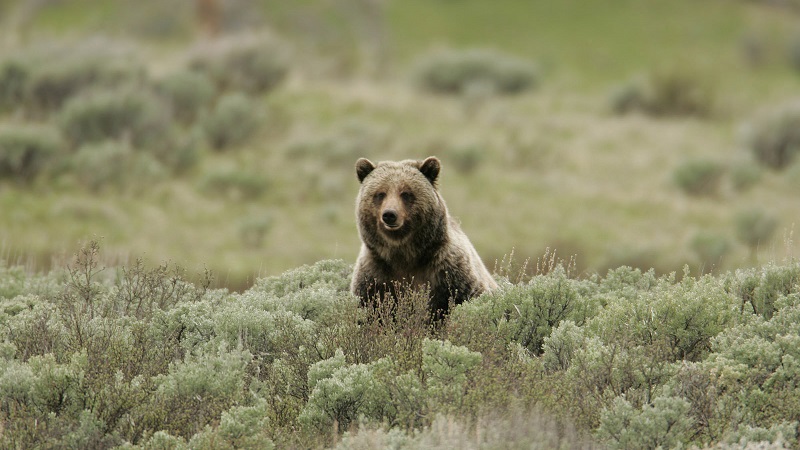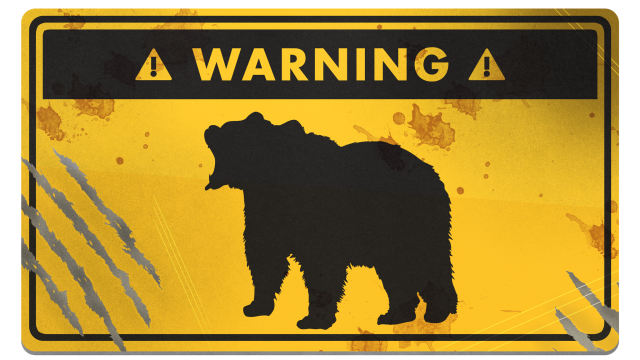You might think you know what to do if you are out and about in the forest and come across a bear, but you might also be dead wrong — in which case, you might end up dead. Prompted by a recent Facebook post from the U.S. National Parks Service sharing some dos and don’ts (“…don’t push your slower friends down in attempts [to] save yourself.”), we’re here to remind you of what you should do if you ever run into a bear in the wild who isn’t as friendly as Baloo.
This is part of Lifehacker’s Animal Attacks Series. As capable as we humans think we are, bears, snakes, wolves, sharks, and even bees can turn a fun day outside into a potentially life-threatening reality check. Here’s what to do when you find yourself face to face with some of the deadliest beasts in the great outdoors.
While terrifying bear attacks like the one in The Revenant do happen on occasion, most bears would rather leave you alone and be left alone. I’ve had a few run-ins with bears myself and they were mostly interested in digging through garbage. If you encounter a bear while you’re out hiking or camping, the Alaska Interagency Bear Safety Education Committee recommends you start by identifying the type of encounter. What you should do depends on whether the bear is acting defensively or offensively — but you’ll also want to know how to avoid them in the first place.
Editor’s Note: Thankfully, bear attacks are less common in Australia than in the U.S. — but you never know when these tips will come in handy.
How to keep bears at bay
There are a few things you can do to lower your chance of encountering a bear in the wild, and none of them involve a special rock.
Hike with a crowd
You want to avoid happening upon a bear, and the same is probably true of the bear — which would rather avoid you. If you hike in a group, you’ll be making more noise and emitting more disgusting human smells that will warn bears off long before you get too close.
Do not allow bears access to your food
The best way to steer clear of bears is to give them less reason to come near you or your campsite — so make sure you keep your food under wraps (preferably in something air-tight, like a cooler — some parks require them) or hang it in a tree using a bear bag. This will also help others: If the bear gets the idea that a campsite means free food lying around for the taking, they’ll be more likely to come around again the next time they smell humans.
So you’ve encountered a bear

If you do encounter a bear in the woods, the first thing to do is to get a read on its mood — and on the type of bear you are dealing with.
A defensive bear
A defensive bear is one you’ve happened upon by accident and surprised, which may scare it so it runs off, or elicit a rapid attack to which you have very little time to react. If a surprised bear strikes or bites you, what you need to do will differ based on the type of bear it is.
Brown or grizzly bears
If attacked by one of these bears, drop to the ground, lie flat, protect your head and neck with your arms and hands, and play dead until it leaves. Spread your legs so you are harder to turn over. If the bear doesn’t leave you alone, fight back using whatever rocks, branches or personal items you can. Try to hit the bear in the face.
Black bears
Playing dead won’t go so well if your attacker is a black bear. You need to get away as fast as possible, and escape into a secure location like a car if you can. Again, if escape isn’t an option, fight back however you can, aiming your blows at the bear’s face and muzzle.
An offensive bear
An offensive bear is one that’s stalking you, or one you may see off in the distance purposefully moving toward you. According to Bill Schneider, the author of Bear Aware and Where the Grizzly Walks, and according to professor Steve Herrero of the Eastern Slopes Grizzly Bear Project, you should stop moving toward the bear and go back the way you came for at least 365 m. Once it’s out of sight, use a different trail or wait 20 minutes before continuing — making loud noises as you go. Move to higher ground to make yourself appear larger — but don’t think of climbing a tree — both grizzly and black bears can do that, the National Park Service notes.
If the bear is fairly close when you see it, do not panic, run wildly or scream (that might encourage the bear to chase you) and don’t drop your backpack, as it can provide protection for your back if worse comes to worst. Immediately pick up any children who might be hiking with you. Do not make eye contact with the animal. Stand your ground and, if you have it, prepare your bear pepper spray (which you should carry if you’re out hiking in an area where bears are frequently seen). Then, slowly move away by moving to the side rather than turning around or (especially) running away; moving to the side allows you to keep an eye on the bear and while also avoiding appearing threatening (or like prey). Talk in a quiet, monotone voice — which announces your presence to the bar and lets it know you’re a human and probably not something it wants to eat — until it’s out of sight. As you move away, slowly raise and lower your arms like you’re doing jumping jacks without the jumping.
If the bear charges, stand your ground. Schneider says most charges are actually bluffs to scare you off (like you need help with that). If the bear doesn’t stop, use your pepper spray once it’s in range, which is usually about 9 or 10 metres. If you don’t have any pepper spray, make loud noises and wave your arms before it makes contact, and aggressively fight it off with anything you have. Again, keep in mind, encounters with offensive bears are extremely rare.
This article was originally published in August 2016. It was updated in August 2020 to provide more complete information about how to avoid encountering bears in the wild and how to survive encounters with different types of bears.

Leave a Reply
You must be logged in to post a comment.